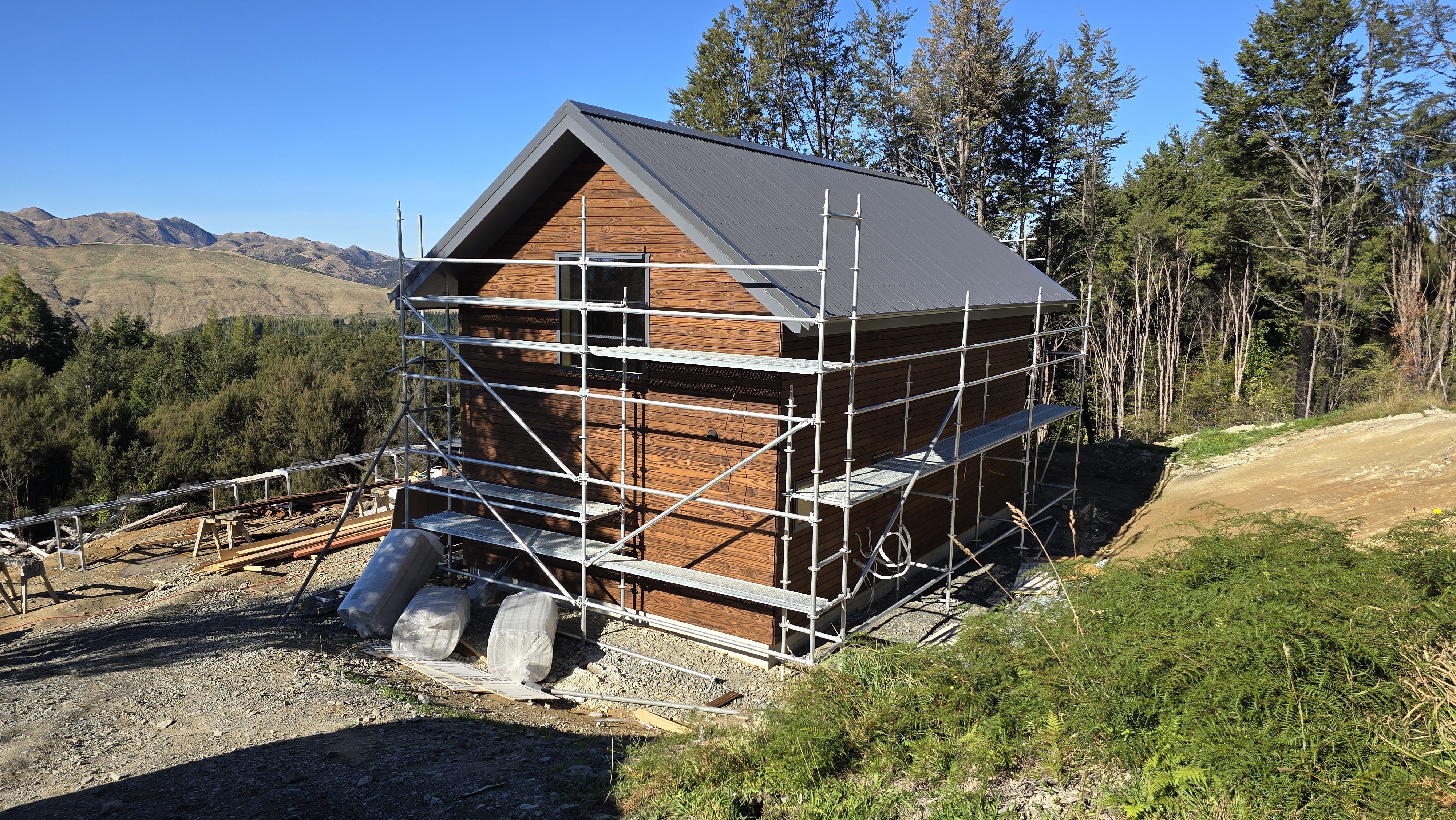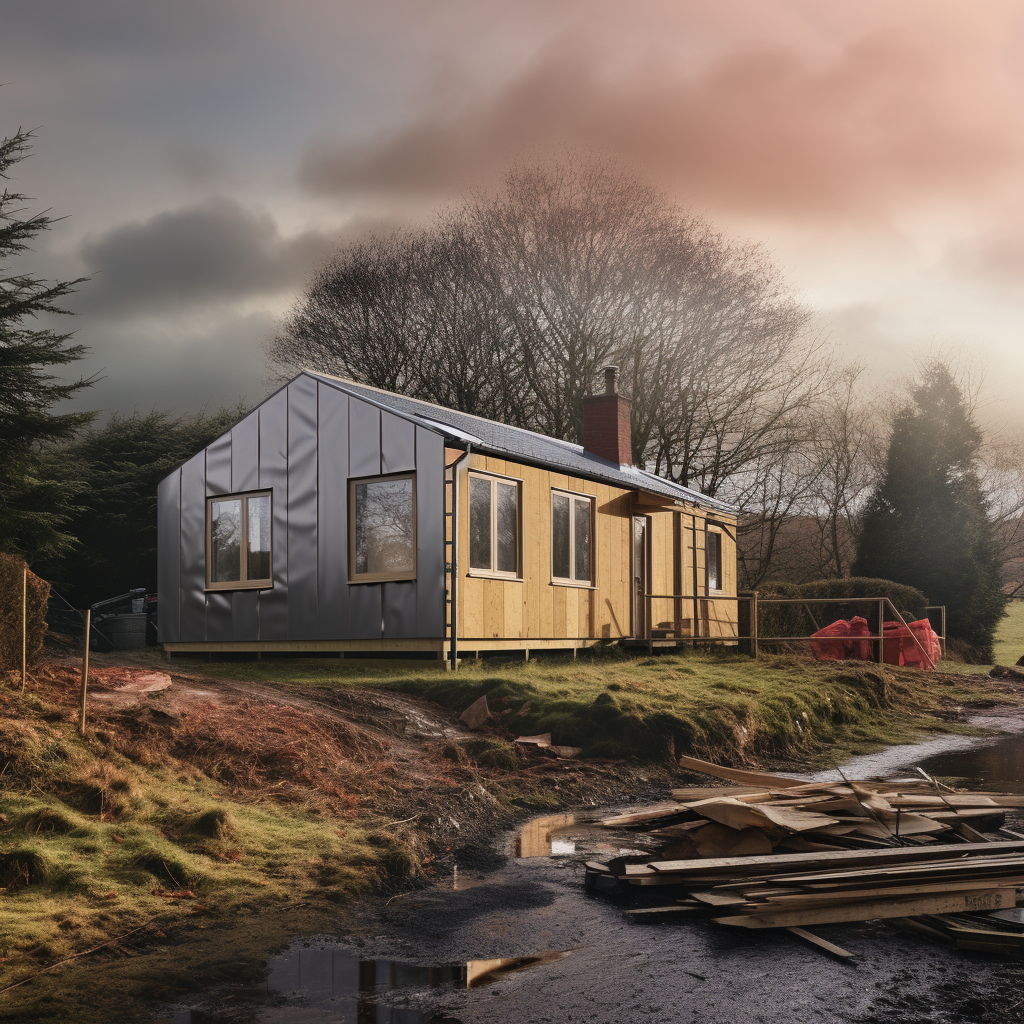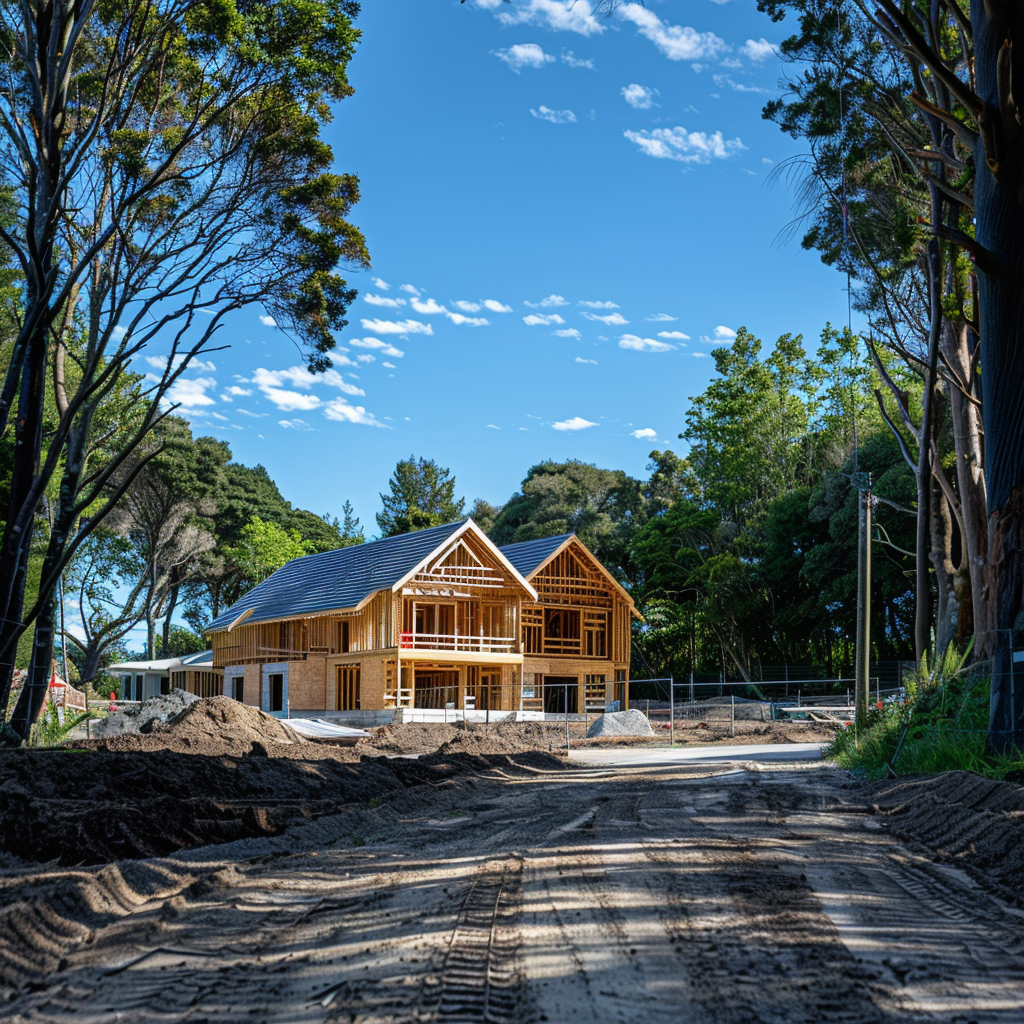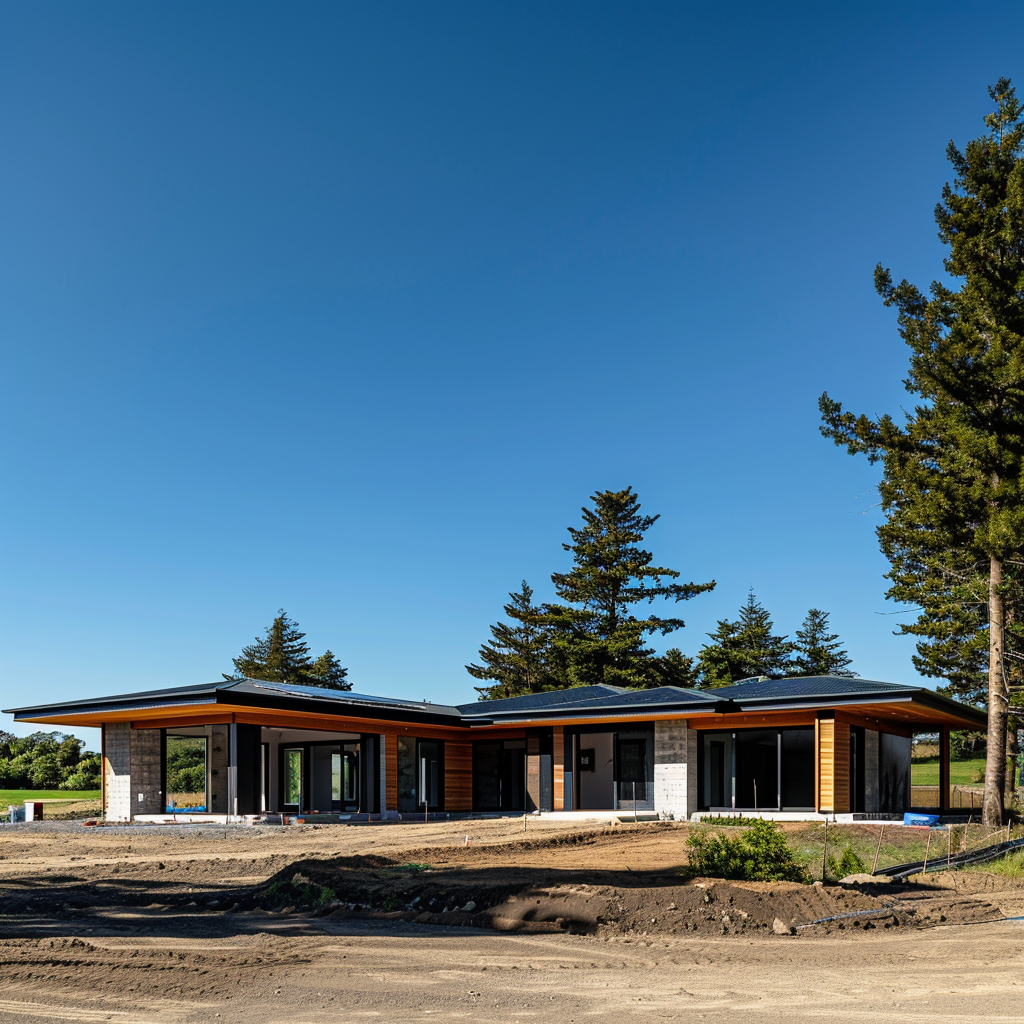Master the Timing of Key Construction Materials to Avoid Delays in Your New Build
The difference between a successful new build and a project that's riddled with delays and cost overruns often boils down to one crucial aspect: timing. Construction material timing is an art, requiring meticulous planning and execution. In New Zealand, where the construction landscape is as diverse as the people, understanding the nuances of this process is vital.
In this article, we delve into the intricacies of essential timing for key building materials in new home construction. We explore specific timelines for ordering and installing these materials - a comprehensive guide designed to help you sidestep delays and keep your project on track.
The Importance of Timely Deployment
The building materials we will cover are:
- Roofing Materials: The first line of defence against New Zealand's variable weather conditions.
- Insulation: A critical component for energy efficiency, particularly in colder climate zones.
- Custom Doors and Windows: Adding aesthetic appeal while enhancing performance.
- HVAC Systems: Integral to design integration and space planning.
- Custom Cabinetry: Playing an essential role in functional storage solutions and design aesthetics.
Each of these components plays a critical role in home construction, impacting not only the structure but also the comfort, security, aesthetics, and energy efficiency of your new home. Their timely deployment is essential in ensuring your project remains on schedule.
Understanding the Timing for Each Material
1. Roofing Materials
Roofing materials are your home's first line of defence against New Zealand's unpredictable weather patterns. From heavy rain to strong winds, your roof protects you from the elements. That's why it's crucial to understand the importance of timely installation:
- Weather Considerations: New Zealand experiences varied weather conditions throughout the year. By scheduling your roofing installation during periods of relatively stable weather, you can minimise the risk of delays caused by rain, wind, or other unfavorable conditions.
- Coordination with Other Trades: Roofing installation often involves coordination with other trades, such as electricians or plumbers. By ensuring that these tasks are completed before or after the roofing work, you can avoid conflicts and potential delays.
2. Insulation
Insulation is a key factor in maintaining energy efficiency within your home, especially in colder climate zones. Here's why timing matters when it comes to insulation:
- Seamless Integration: Insulation works best when installed at the right stages of construction, such as during framing or before drywall installation. By incorporating insulation into these early phases, you can achieve better coverage and thermal performance.
- Avoiding Disruptions: Retrofitting insulation after the completion of other construction activities can be challenging and may lead to delays. Planning ahead and scheduling insulation installation at the appropriate time can help prevent such disruptions.
3. Custom Doors and Windows
Custom doors and windows not only enhance the visual appeal of your home but also contribute to its overall functionality. Here are some reasons why timing is crucial for these features:
- Accurate Sizing: Custom doors and windows require precise measurements to ensure a proper fit. Ordering them too early or too late in the construction process can result in sizing errors, leading to additional costs and delays.
- Lead Time for Manufacturing: Depending on the complexity of your design choices, custom doors and windows may have longer lead times for manufacturing. Factoring in this lead time when placing your order can help prevent unnecessary delays.
4. HVAC Systems
HVAC (Heating, Ventilation, and Air Conditioning) systems play a vital role in maintaining indoor comfort levels throughout the year. Here's why early consideration for HVAC installation is important:
- Design Integration: HVAC systems often require careful integration with other building elements, such as ductwork installation during framing or equipment placement before drywall. By involving HVAC specialists early in the design phase, you can ensure smoother coordination and avoid potential conflicts.
- Space Planning: HVAC equipment, such as air conditioning units or heat pumps, may require dedicated space for installation. Identifying these requirements early on can help you allocate the necessary areas and avoid last-minute adjustments.
5. Custom Cabinetry
Custom cabinetry serves as both functional storage solutions and design features in New Zealand's kitchens and bathrooms. Here's why timely consideration for custom cabinetry is essential:
- Design Coordination: Custom cabinetry often involves coordination with other trades, such as plumbers or electricians. By discussing your cabinetry plans with these professionals in advance, you can address any potential conflicts or modifications needed for utilities.
- Manufacturing Lead Time: Similar to custom doors and windows, custom cabinetry may have longer lead times for manufacturing due to specific design requirements. Including this lead time in your project schedule can prevent delays in completing these spaces.
Mastering the timing of key construction materials is crucial for a smooth and successful new build project. By understanding when to order and install roofing materials, insulation, custom doors and windows, HVAC systems, and custom cabinetry, you can minimise delays and keep your project on track.
In the following sections of this article, we will explore each of these building materials in detail - discussing their importance, optimal timing considerations, and potential challenges to watch out for. Stay tuned!"
1. Roofing Material Ordering Timeline
A home's roofing system is crucial in protecting it from New Zealand's ever-changing weather conditions. From scorching sun to heavy rain and even occasional snow, the roof acts as the first line of defense. That's why it's essential to order roofing materials on time, not just to keep the construction schedule on track, but more importantly, to safeguard the house from potential damage caused by the elements.
Why Timely Roofing Installation Matters
Here are some key reasons why getting the roof installed promptly is important:
- Prevents Water Damage: Timely installation ensures that the structure remains watertight, preventing any moisture from seeping in and causing long-term damage.
- Creates a Safe Working Environment: When the roof is in place, other tradespeople can carry out their work in a secure and dry space, without being exposed to the weather.
- Maintains Construction Momentum: Completing the roofing stage on time helps to keep the overall project moving forward smoothly, avoiding unnecessary delays.
Recommended Timeline for Ordering Roofing Materials
When planning for a new construction project, it's crucial to consider the following stages when ordering roofing materials:
- Early Planning Phase: This is when you should start exploring different roofing material options based on factors such as architectural design, budget constraints, and local climate conditions.
- Design Approval: Once your building plans have been approved, it's time to reach out to suppliers and gather quotes for the specific roofing materials you've chosen.
- Lead Time Consideration: Keep in mind that certain types of roofing materials, like clay tiles or specialised metal products, may require longer production lead times.
- Placing Your Order: After carefully reviewing all the details and confirming delivery schedules with your chosen supplier, proceed with placing your order for the required roofing materials.
Ideally, builders should aim to order roofing materials shortly after receiving design approval and well in advance of the planned start date for installation. This allows for any unforeseen delays in production or shipping to be accounted for without impacting the overall construction timeline.
The Risks of Delayed Roofing Installation
If roofing materials do not arrive as scheduled, it can result in various issues that may disrupt the construction process:
- Delays for Other Trades: Subsequent trades, such as plumbers or interior contractors, may be unable to proceed with their work if a weatherproof structure is not yet in place.
- Increased Expenses: Idle labor and equipment costs can quickly add up if there are no tasks to be completed due to the delay.
- Potential Water Damage: Temporary weather protection measures, such as tarps or coverings, are not foolproof. A sudden downpour could lead to water intrusion and damage the exposed interior.
Imagine a scenario where the framing is complete but the roof cannot be installed due to unavailable materials. A sudden downpour could compromise not only the structural integrity but also recently completed electrical or insulation work.
How to Minimise Risks through Planning and Communication
To mitigate the chances of experiencing delays in roofing material deliveries, builders can take proactive measures:
- Build Strong Supplier Relationships: Establishing good communication channels with your suppliers can help you stay informed about any potential issues or delays early on.
- Stay Updated on Delivery Schedules: Keep in touch with your suppliers regularly to get real-time updates on the status of your order and any changes in the supply chain.
- Plan for Contingencies: Always have backup options available in case your preferred materials face unexpected production or transportation challenges.
- Include Clear Contractual Agreements: When finalizing agreements with suppliers, be sure to outline specific expectations for delivery timelines and discuss potential penalties for late shipments.
Schedule regular check-ins with your suppliers as part of your project management routine, ensuring that everyone remains aligned on timelines and any potential issues can be addressed promptly.
By incorporating these practices into their project management strategies, builders maintain control over their schedules and minimise risks associated with delayed roofing installations.
2. Insulation Installation Schedule
When it comes to building new homes in New Zealand, attention to insulation is key. This is especially true in our colder climate zones, where energy-efficient homes are not just desirable, but necessary. Insulation plays a pivotal role in this. By reducing heat transfer, it helps maintain a comfortable indoor temperature year-round, lowering heating costs and contributing to a more sustainable living environment.
Let's delve into the insulation installation schedule and explore its interdependencies with other building components.
Interdependencies of Insulation Installation
Insulation plays a critical role in the construction process and must be carefully coordinated with framing and drywall installation for a seamless workflow. The order of these stages is crucial:
- Framing: The skeleton of the home is built.
- Insulation: Once the frame is up, insulation materials can be installed.
- Drywall: After insulation has been fitted, drywall can be put up.
These stages should follow one after the other without interruption to prevent project delays.
When to Order Insulation
Taking into account the above workflow, it's clear that insulation materials need to be on-site right after framing completion. Therefore, ordering should occur immediately after the foundation inspection pass, giving enough time for delivery and accounting for any unforeseen supply issues.
Several factors should be considered when deciding when to order specific types of insulation materials:
- Availability: Some types of insulation may have longer lead times due to high demand or limited availability.
- Compatibility: Ensure that your chosen insulation type is compatible with your framing material and construction method. This will avoid costly rework or delays later on.
Remember: Early planning and proactive ordering are key strategies to avoid delays in your project timeline.
Impact of Delays in Insulation Delivery
If insulation delivery is delayed, this has ripple effects on subsequent stages of construction. A delay in insulation installation can hold up drywall installation, which in turn prolongs the completion of internal finishes. This delay cascades down the line, causing other trades to wait their turn, ultimately pushing out the project completion date.
Insulation plays a vital role in maintaining the energy efficiency of New Zealand homes. It's important not just to choose the right insulation, but also to plan its installation carefully within your project timeline. By understanding the interdependencies between insulation, framing and drywall installation, you can better manage your insulation installation schedule, prevent costly delays and ensure a smooth journey towards your new home build.
3. Timing for Custom Doors and Windows
The timing for custom doors and windows is crucial in the construction schedule of a new build. Using customised doors and windows can greatly improve the look of your home, as well as enhance insulation, natural light, and overall architectural design.
The Importance of Custom Doors and Windows
Custom doors and windows offer both aesthetic and functional benefits:
- Aesthetics: Every part of your home adds to its character, including doors and windows. With custom designs, you can create a unique look that reflects your personal style.
- Performance: Customised options are designed to fit perfectly in their designated spaces, reducing drafts and improving insulation efficiency. This is especially important in New Zealand where weather conditions can vary.
Ordering Process for Custom Doors and Windows
Ordering custom doors and windows requires careful planning to avoid any issues or delays:
- Accurate Measurement: Measurements should be taken accurately during the framing stage by experienced professionals.
- Double-Checking: Before placing orders, it's essential to double-check all measurements to ensure they are correct.
- Communication: Maintain open communication with your supplier throughout the process to stay updated on the status of your order.
Impact of Delays on Your Build
Delays in installing custom doors and windows can have serious consequences for your build schedule:
- Weather Exposure: Without proper installation, your property may be exposed to weather conditions, leading to potential damage.
- Security Risks: Uninstalled doors and windows can make your property vulnerable to break-ins or theft.
- Trade Disruption: Other trades working on the project may be unable to proceed if they require access through doors or windows.
Factoring in Lead Times
It's important to consider lead times when planning for custom doors and windows:
- Variability: Lead times can vary depending on the supplier and specific order requirements.
- Longer Wait: Custom orders typically take longer to manufacture compared to standard ones.
- Flexibility: Building some flexibility into your schedule can help accommodate any unexpected delays.
- Supplier Communication: Maintaining close communication with your supplier allows for early identification of potential problems and proactive solutions.
Timing is crucial when incorporating custom doors and windows into your new build. By planning ahead, understanding the process, and accounting for potential delays, you can ensure that these important elements contribute positively to your project without causing significant setbacks.
4. HVAC Systems Ordering Guide
Managing the timing of essential construction materials is a balancing act, and HVAC systems are no exception. These systems require early consideration, not only to ensure their timely delivery but also to integrate them seamlessly into the design and space planning of your new build.
Importance of Early Consideration
An HVAC system is more than just heating and cooling; it's about creating a comfortable living environment all year round. That's why it's crucial to include its components in the architectural plans from the start. By doing this, you can:
- Allow enough space for ductwork and equipment, making the installation process smoother.
- Avoid costly changes or modifications later on.
Components of an HVAC Setup
A comprehensive HVAC setup comprises several critical components, each with its own lead time requirements:
- Heating Equipment: This can range from traditional furnace units to modern heat pumps - New Zealand homes often use these for both heating and cooling due to their efficiency.
- Cooling Equipment: Options include split systems, which have separate indoor and outdoor components, or evaporative coolers in drier climates.
- Ventilation Systems: These are necessary for maintaining good indoor air quality.
- Ductwork: Custom ductwork takes time to manufacture and needs to be ordered well before installation.
Understanding the lead times for these components enables you to plan effectively, ensuring that all parts arrive when needed without causing delays.
Consequences of Delayed HVAC Installation
While it might be easy to overlook in the early stages of construction, delaying the installation of your HVAC system can have significant consequences on occupant comfort during the construction phase itself.
For instance, if you're building in one of New Zealand's colder regions, a delayed HVAC system could leave your interior exposed to cold temperatures longer than necessary. This can not only cause discomfort but also potentially damage other elements of your construction that are sensitive to cold.
Similarly, in warmer areas, a lack of adequate air conditioning can turn your new build into a sweltering environment, making it difficult for other trades to work efficiently and safely.
Tips for Timely HVAC Delivery
To prevent these issues and ensure timely delivery of your HVAC system, consider the following strategies:
- Establish Clear Communication Channels: As with any supplier, establishing clear and regular communication channels with your HVAC provider is essential. This includes understanding their delivery schedules and lead times, and keeping them updated on any changes to your construction timeline.
- Source Locally When Possible: Sourcing from local suppliers can often result in shorter lead times. Plus, local suppliers are likely more familiar with New Zealand's climate and building regulations.
- Order Early: Given the complexity of HVAC systems and the potential for custom components like ductwork, it's always advisable to order early. This gives you ample time to accommodate any unforeseen delays.
By adhering to this HVAC systems ordering guide, builders can ensure they are preparing for HVAC installation effectively. It's all about comprehensive planning - knowing when to order what and coordinating these orders with the overall construction schedule.
5. Custom Cabinetry Delivery
Custom cabinetry delivery is a crucial step in creating unique kitchens and bathrooms across New Zealand. These custom-made cabinets not only provide essential storage solutions but also greatly enhance the overall look of these areas. Since kitchen and bathroom designs often showcase personal style and current trends, the successful incorporation of custom cabinetry showcases the craftsmanship and careful planning involved.
Effective Planning and Collaboration
Installing custom cabinetry requires careful coordination with other important construction stages:
- Electrical Rough-Ins: The placement of outlets, switches, and wiring for fixtures must be decided before installing the cabinets.
- Plumbing Rough-Ins: The positioning of sinks, faucets, and appliances requires establishing their water supply and drainage systems in preparation for cabinet installation.
- Cabinet Installation: Accurate measurements are crucial to ensure that the cabinets fit perfectly around existing electrical and plumbing components without needing expensive modifications.
This collaboration between different trades is sensitive. Any mistakes can lead to rework, higher expenses, and delays that affect the project's timeline.
The Significance of Timely Delivery
The timing of custom cabinetry arrival is particularly important. Lead times for kitchen cabinets can range from several weeks to months, depending on complexity and workload at the manufacturing facility. A delay in delivery can hold up subsequent processes that are vital to completing the project:
- Appliance Installation: Without cabinets in place, it's impossible to properly install and test appliances.
- Countertop Fitting: Cabinet installation usually precedes countertop installation because accurate on-site measurements are needed.
- Final Plumbing & Electrical Work: Sinks, faucets, and last-minute electrical fittings require the presence of cabinets for correct positioning.
Therefore, a setback in custom cabinetry delivery has the potential to slow down progress on multiple fronts.
Strategies for Prompt Delivery
Builders can employ various strategies to minimise the risks associated with lead times for custom cabinetry:
- Early Communication with Suppliers: Build relationships with cabinetry suppliers early on to understand their production schedules and capabilities.
- Thorough Planning: Ensure that all specifications are finalised well in advance to avoid last-minute alterations that could prolong lead times.
- Ordering Standard Items in Advance: In situations where delays are expected or unavoidable, think about installing temporary fixtures or non-custom items that allow other trades to continue their work.
- Regular Updates: Maintain open lines of communication with manufacturers to receive updates on production progress and potential delays.
By actively managing these aspects of custom cabinetry delivery, builders can minimise the impact on overall project timelines while upholding high standards of quality and design. This approach not only meets client expectations but also strengthens a builder's reputation for being dependable and skilled in project management.
Ultimately, paying close attention to detail during this phase ensures that when homeowners enter their new space, they're greeted by flawless finishes that reflect their dream home – from the smooth closing of a drawer to the precise alignment of cabinet doors – each element contributing to a harmonious living environment.
6. Construction Project Scheduling Best Practices
In the fast-paced world of new construction projects, mastering the skill of construction project scheduling ensures a smooth transition from plans to reality. This involves not only predicting material requirements but also carefully organizing deliveries.
Effective Construction Project Scheduling Principles
Key principles of effective construction project scheduling include:
- Strategic Planning: Develop detailed timelines for each phase, taking into account how long it will take to get materials and adding extra time for unexpected delays.
- Proactive Material Management: Identify items that will take a long time to arrive early on and make sure they are ordered promptly to avoid delays later.
- Integrated Workflow: Coordinate schedules between different trades to prevent delays in one area from causing problems elsewhere.
Building Strong Supplier Relationships
Creating strong relationships with suppliers is crucial. Builders who take the time to understand what their suppliers can and cannot do will be able to handle the process of getting materials more efficiently. Key actions include:
- Keeping suppliers updated on how the project is going on a regular basis
- Sharing schedules well in advance so everyone knows what to expect
- Working together with suppliers to quickly solve any potential issues that may arise
Leveraging Technology for Efficiency
Project management software has completely changed how construction scheduling works. These tools give builders more power by:
- Giving them instant updates on where materials are at
- Making it easy to share schedules with everyone involved in the project
- Allowing them to quickly change timelines when needed
A practical example is using cloud-based platforms that let different team members keep an eye on how things are progressing according to the schedule and make any necessary changes.
Local Expertise: A Valuable Resource
Taking advantage of knowledge from people who are familiar with the area can give builders information that goes beyond just knowing how long it takes for something to be delivered. It's helpful to think about:
- Whether or not a supplier's practices align with New Zealand's environmental standards
- Making sure that everything being done follows local building codes so there aren't any problems with regulations
- Asking for recommendations from local tradespeople who may have connections with reliable suppliers
By following these best practices, builders can successfully manage the challenges of handling materials for new construction projects.
Conclusion
Timing is crucial in home construction, with the delivery and installation of essential materials for home construction often determining the success of a project in New Zealand. As we've discussed, every material, from roofing to custom cabinetry, plays a vital role in the building process. Effectively managing these items means understanding their timelines and how they impact the overall construction schedule.
Builders and homeowners are encouraged to incorporate the strategies outlined in this article into their project plans. By doing so, they can navigate the complexities of ordering and installing key building materials more smoothly. Applying these principles helps avoid common problems that lead to costly delays, ensuring that new home builds progress well.
It's important to note that some factors, like shipping disruptions or unforeseen supplier issues, may be beyond direct control. However, taking a proactive approach in planning and getting building materials significantly reduces the risk of such problems. Being prepared allows builders to adapt quickly to changes and keep the project moving.
Consider these action steps:
- Plan Early: Include material lead times in project schedules from the beginning.
- Communicate Clearly: Establish strong communication channels with suppliers for timely updates.
- Leverage Technology: Use project management tools for efficient tracking and coordination.
- Build Relationships: Foster good partnerships with suppliers to improve reliability and support.
- Stay Informed: Stay updated on market trends that affect material availability and pricing.
By making early contact with suppliers a priority, being flexible with construction timelines, and staying informed about market conditions, builders in New Zealand can effectively handle the delivery of building materials.
Remember that every new home build is different, but they all share one thing — the importance of timing and coordinating materials. While this may seem challenging at first, it's actually an opportunity to demonstrate professionalism and expertise throughout the construction process.
As professionals in New Zealand's strong construction industry continue to improve their methods, they not only contribute to better project outcomes but also uphold the high standards expected across the sector. By dedicating themselves to careful planning and open collaboration, the issue of timing becomes less about avoiding obstacles and more about achieving excellence in home building.
Ultimately, mastering the timing of key construction materials isn't just about staying on schedule — it's about taking each build to its highest level. When every piece falls into place at the right moment, new homes not only meet expectations but also have the potential to surpass them.
Keywords for Search:
construction material timing, building materials for new homes, roofing material ordering timeline, insulation installation schedule, custom doors and windows timing, hvac systems ordering guide, custom cabinetry delivery, construction project scheduling, new build material management, avoiding construction delays, efficient building material ordering, timing for roofing installation, when to order insulation, custom window manufacturing times, preparing for hvac installation, lead times for kitchen cabinetry, new zealand home building tips, building supply chain management, essential materials for home construction, managing delivery of building materials, construction timing best practices, securing materials for home builds, home construction planning guide, ensuring timely material delivery, impact of material delays on construction






